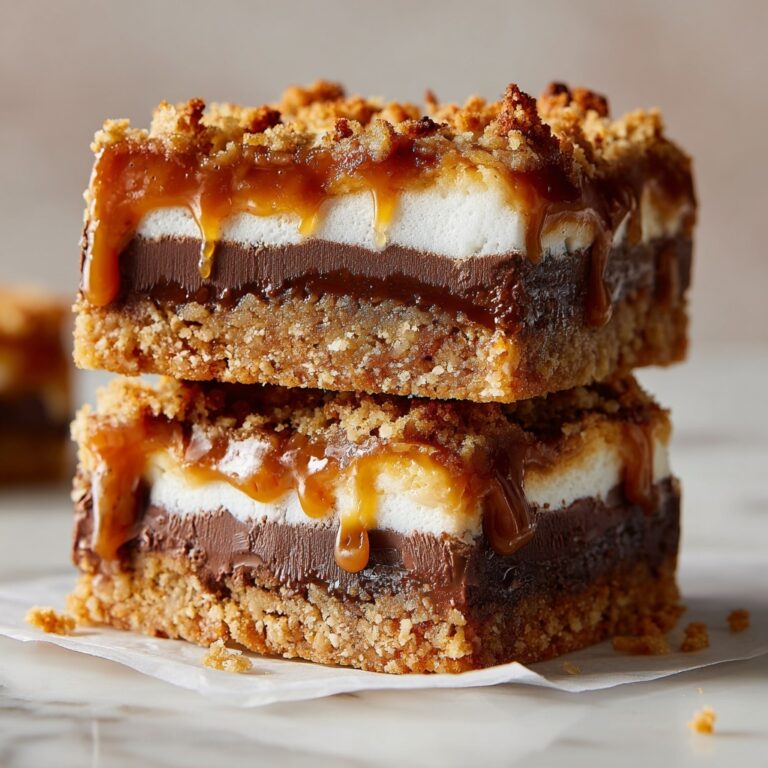If you’ve ever dreamed of biting into a flaky, buttery pastry fresh from your own oven, this Classic Butter Croissants Recipe is your golden ticket. These croissants boast layers of tender dough enveloping generous folds of rich butter, creating a delicate crunch that melts beautifully in your mouth. Though croissants might seem intimidating, this recipe breaks down each step with loving care, turning the magic of French baking into something wonderfully achievable. Whether you’re a weekend baker craving a fresh breakfast treat or eager to impress friends with your pastry prowess, making these croissants from scratch will fill your kitchen with irresistible aromas and your heart with bubby satisfaction.

Ingredients You’ll Need
The simplicity of the ingredients is the secret behind the elegance of this Classic Butter Croissants Recipe. Each one plays a special role: the flour builds the structure, butter lends richness and flakiness, yeast and sugar work their leavening and flavor magic, and the egg gives a shiny golden finish.
- Strong white bread flour: Provides the gluten strength essential for those distinct, airy layers.
- Salt: Enhances flavor and balances the sweetness.
- Caster sugar: Feeds the yeast and adds a subtle sweetness.
- Instant yeast: Powers the dough’s rise to create fluffy layers.
- Cool water: Keeps the dough temperature controlled for perfect texture.
- Chilled unsalted butter: The star ingredient that creates flaky, buttery layers; quality matters, aim for at least 82% fat.
- Medium egg (for glazing): Brushed on top to give croissants that gorgeous glossy, golden crust.
How to Make Classic Butter Croissants Recipe
Step 1: Mix Your Ingredients
Start by combining your flour, salt, caster sugar, and instant yeast in a stand mixer fitted with a dough hook. Then pour in the cool water and mix on low for 2 minutes. Increase the speed to medium and continue mixing for another 6 minutes until a stiff but smooth dough forms. This is the foundation of those tender, layered croissants, so be patient here.
Step 2: Rest and Chill the Dough
Shape the dough into a ball, dust it lightly with flour, pop it into a plastic bag, and chill in the fridge for an hour. Resting the dough relaxes the gluten and helps the flavors deepen, making the dough easier to roll out later.
Step 3: Prepare the Butter Layer
Roll the dough into a 60x20cm rectangle on a lightly floured surface. Meanwhile, flatten your chilled butter into a 40x19cm slab that’s even and pliable. Lay this butter slab over the bottom two-thirds of the dough to prepare for the folding and layering process that gives croissants their iconic flakiness.
Step 4: Enclose the Butter
Fold the top third of the dough over half the butter, then bring the bottom third up to seal it all inside. This “butter packet” is essential because it traps the cold butter inside dough layers, ready for lamination.
Step 5: Refrigerate the Dough
Seal the dough in a plastic bag and refrigerate for another hour. Keeping the dough cold is critical to prevent butter melting too early, which can ruin the layers you’re about to create.
Step 6: Roll and Fold (Lamination)
Roll the dough again into a 60x20cm rectangle and fold it into thirds—like folding a letter. Rotate the dough 90 degrees and repeat this rolling and folding process two more times, chilling the dough in the fridge for an hour between each turn. This step builds those beautiful thin layers buttery layers that puff with tenderness and crunch.
Step 7: Overnight Rest
After the final fold, refrigerate the dough overnight for about 8 hours. This longer rest allows the dough to relax fully and rise slightly, improving both flavor and texture.
Step 8: Shape the Croissants
Roll the rested dough out to a 42x30cm rectangle, about 7mm thick, and trim the edges for neatness. Cut the dough into two long strips and then slice each strip into 12 triangles, each with a 12cm base and 15cm height. Gently stretch each triangle, then roll it tightly from base to tip, curving the ends slightly for that classic crescent shape.
Step 9: Proof the Rolls
Place your shaped croissants on lined trays, cover them gently, and let them proof at room temperature (between 18 and 24°C) for about 2 hours, until they’ve doubled in size. This is where your patience pays off — the dough gets airy and ready to transform into the flaky beauties we all love.
Step 10: Bake to Golden Perfection
Preheat your oven to 200°C (around 392°F). Brush the croissants with beaten egg to give them that irresistible shine and golden-brown color. Bake for 15 to 20 minutes until perfectly puffed and deeply golden. Let them cool slightly before grabbing your first bite.
How to Serve Classic Butter Croissants Recipe

Garnishes
While these croissants are sensational on their own, a light dusting of powdered sugar after baking adds just a hint of sweetness without overpowering their buttery blocks. You can also brush them with melted honey or a little apricot jam glaze for extra shine and a touch of sophistication.
Side Dishes
These croissants pair beautifully with classic accompaniments like fresh fruit preserves, creamy butter, or your favorite cheeses. For a hearty brunch, serve alongside scrambled eggs, smoked salmon, or a vibrant salad. Their flaky texture and buttery flavor complement a variety of sweet or savory sides.
Creative Ways to Present
Get creative by slicing warm croissants in half and filling them with ham and cheese for a quick gourmet sandwich. Or try them as part of a decadent bread pudding or french toast bake. Their versatility ensures each bite remains a delightful experience, whether simple or dressed up.
Make Ahead and Storage
Storing Leftovers
After you’ve indulged in some fresh croissants, store any leftovers in an airtight container at room temperature for up to two days. This keeps them soft yet prevents them from drying out too much.
Freezing
If you want to enjoy croissants over several days, freeze them before baking by shaping and wrapping tightly in plastic wrap, then storing in a freezer bag for up to one month. You can also freeze baked croissants following cooling—just wrap well to maintain freshness.
Reheating
To revive croissants after storage or freezing, gently warm them in a preheated oven at 180°C (350°F) for about 5 to 8 minutes. This restores their flaky exterior and warm, buttery interior almost like fresh-baked.
FAQs
Can I use regular unsalted butter instead of high-fat butter?
While regular unsalted butter will work, high-fat butter with at least 82% fat creates flakier, richer layers essential for authentic croissants. The quality and fat content of your butter matter a lot in this recipe.
Do I need a stand mixer to make this recipe?
A stand mixer with a dough hook makes mixing easier and more consistent, but you can knead the dough by hand. Just ensure to knead thoroughly until the dough is smooth and elastic.
Why is it important to keep the dough and butter cold?
Cold dough and butter prevent the butter from melting into the dough prematurely, which would ruin the layering process that gives croissants their signature flakiness. It also helps maintain texture during rolling and folding.
Can I make croissants without proofing overnight?
While it’s possible to shorten the resting time, the overnight chill improves flavor, texture, and rise, producing a noticeably superior croissant. Patience truly rewards you here.
What’s the best way to shape croissants for uniformity?
Cut triangles with a sharp knife or pizza cutter, stretch gently before rolling tightly from the base to the tip, and curve the ends slightly for the classic crescent. Consistent sizing ensures even baking and that photogenic look.
Final Thoughts
There’s nothing quite like the joy of creating these golden, flaky croissants yourself. This Classic Butter Croissants Recipe invites you to slow down, enjoy the art of baking, and savor each buttery bite fresh from your oven. Once you’ve mastered this recipe, your mornings will feel extra special—so grab your rolling pin and get baking!
Print
Classic Butter Croissants Recipe
- Prep Time: 45 minutes
- Cook Time: 20 minutes
- Total Time: 12 hours 5 minutes
- Yield: 12 croissants
- Category: Breakfast, Pastry
- Method: Baking
- Cuisine: French
Description
Classic Butter Croissants are a timeless French pastry known for their flaky, buttery layers and crisp golden crust. This detailed recipe guides you through the traditional lamination process, involving careful folding and chilling of dough with high-quality butter, resulting in light, airy croissants perfect for breakfast or a special treat.
Ingredients
Dough
- 500g strong white bread flour
- 10g salt
- 50g caster sugar
- 10g instant yeast
- 250ml cool water
Butter Layer
- 250g chilled unsalted butter (at least 82% fat, high-quality recommended)
Glaze
- 1 medium egg (beaten for glazing)
Instructions
- Mix Dry Ingredients: In a stand mixer fitted with a dough hook, combine the strong white bread flour, salt, caster sugar, and instant yeast to evenly distribute the ingredients.
- Add Water and Knead: Pour in the cool water and mix on low speed for 2 minutes to bring the dough together, then increase to medium speed for 6 minutes until a stiff, elastic dough forms.
- First Rest: Shape the dough into a ball, dust lightly with flour, place in a plastic bag, and refrigerate for 1 hour to relax the gluten.
- Roll Dough: On a floured surface, roll the chilled dough into a rectangle approximately 60x20cm.
- Prepare Butter Block: Flatten the chilled unsalted butter into a 40x19cm rectangle using a rolling pin on parchment paper or silicone mat to maintain thickness and shape.
- Encase Butter: Place the butter block over the bottom two-thirds of the dough rectangle, then fold the top third of the dough over half of the butter, followed by folding the bottom third up, fully sealing the butter inside the dough.
- Chill Dough: Place the dough back in a plastic bag and refrigerate for 1 hour to firm up the butter layer.
- Laminate Dough: Roll the dough out again to 60x20cm, fold into thirds like a letter, rotate the dough 90 degrees, and repeat this rolling and folding two more times, chilling for 1 hour between each turn to develop layers.
- Final Rest: After the last fold, refrigerate the dough overnight (approximately 8 hours) to rest and allow slight rising of the yeast.
- Shape Croissants: Roll the dough to a 42x30cm rectangle about 7mm thick. Trim edges to make straight lines. Cut the dough into two long strips, then cut each strip into 12 triangles with a base of 12cm and height of 15cm.
- Roll Croissants: Gently stretch each triangle to elongate slightly, then roll tightly from the base to the tip, curving the ends slightly to form the classic croissant shape.
- Proof: Place the shaped croissants on lined baking trays. Cover lightly and proof at room temperature (18–24°C) for about 2 hours or until doubled in size.
- Preheat Oven: Heat the oven to 200°C (392°F) to ensure it is ready for baking.
- Glaze: Brush the surface of the proofed croissants with beaten egg to achieve a shiny, golden crust.
- Bake: Bake the croissants for 15–20 minutes until they are puffed, flaky, and golden brown. Allow to cool on wire racks before serving.
Notes
- Use high-quality unsalted butter with at least 82% fat for the best lamination and flavor.
- Keep ingredients and dough chilled between laminations to maintain distinct layers.
- If the dough becomes too warm or the butter starts melting, refrigerate it again before proceeding.
- Proofing times can vary depending on ambient temperature; ensure croissants have doubled in size before baking.
- Brush with egg wash just before baking for a glossy finish but avoid over-brushing to prevent sogginess.
- Store baked croissants in an airtight container at room temperature for up to two days or freeze for longer storage.








